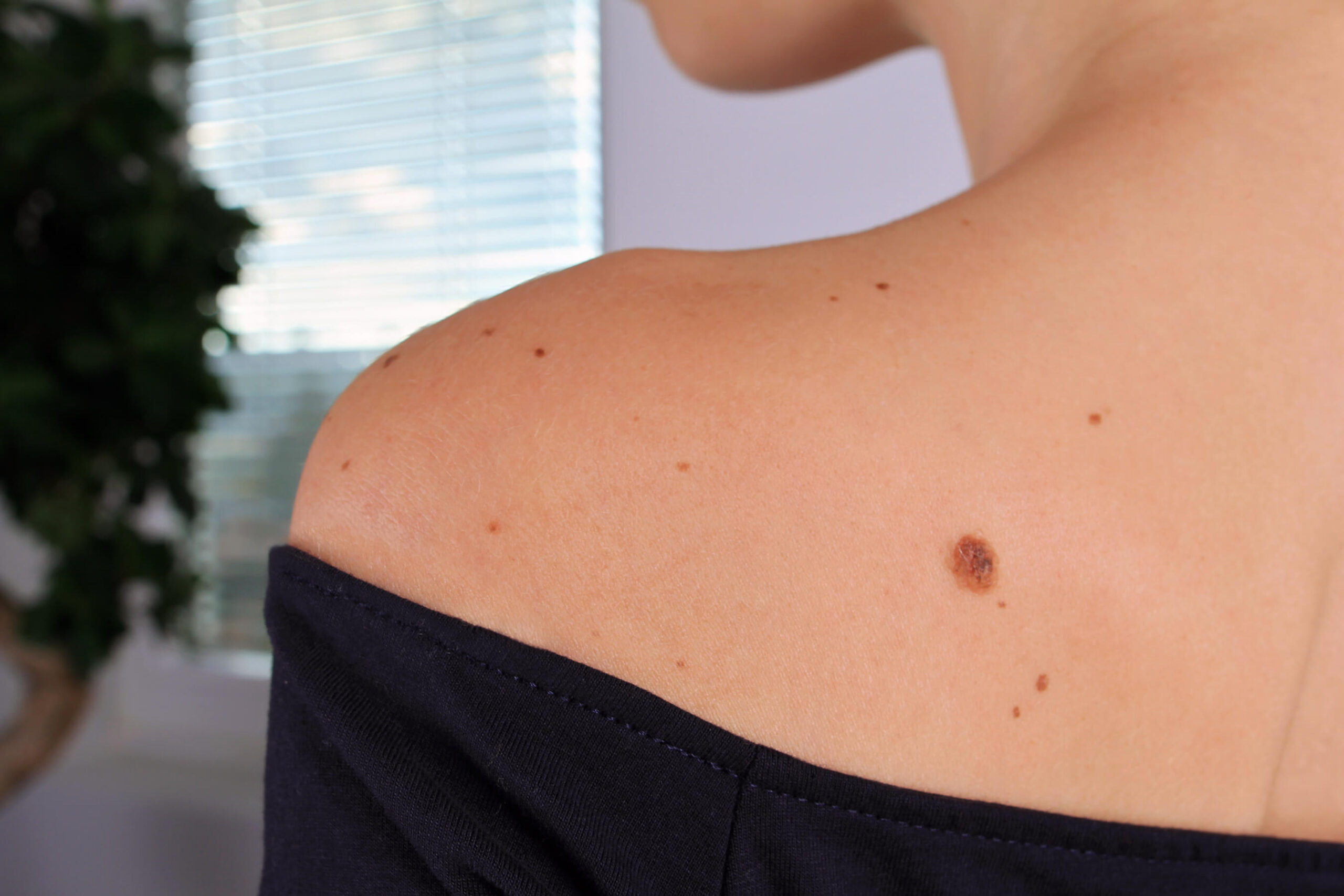It is said that everyone has at least one mole and most people have many more than one. Although most of the time, we do not take much notice of moles, it is a good idea to be aware of them and check them out on a regular basis. Particularly at risk are those people who have experienced severe blistering sunburns in childhood or since. The majority of moles are harmless, usually round or oval and no bigger than a pencil eraser.
Nevertheless, in rare cases moles can become cancerous. So it is understandable that people may worry and wonder if they have a cancerous mole. Some skin cancers, such as basal cell and squamous cell, are less serious since they spread slowly or tend to stay rooted in the area where they start. But melanoma can enter the bloodstream and travel all around the body to cause tumors in organs and other areas of the body. If caught early, melanoma is highly curable.
Melanomas are Visible on the Skin
This fact makes a visual examination of your entire body a sensible thing to carry out every year or more often. Stand before a full-length mirror without your clothes and carefully inspect your face, ears, neck, shoulders, chest, back and the rest of your body, even between fingers and toes, your scalp beneath the hair as well as around your lips and eyes. Even the genitals should be checked as melanoma can occur sometimes in the body as well as on its surface areas.
Have a partner or close family member or friend help you if necessary…
You might want to use a magnifying glass to do a really thorough job of it. To assist you in self examination of your moles, dermatologists have come to the rescue and developed a criteria to help you to pinpoint whether a mole warrants further investigation. This criteria is made up of the first few letters of the alphabet to make it easier for you to remember what to look for.
- A stands for asymmetry – both halves of the mole should match.
- B stands for border – this should be regular and either round or oval.
- C stands for color – the color should be one color including lightening or darkening.
- D stands for diameter – the diameter should be less than a ¼ inch (no bigger than a pencil eraser).
- E stands for elevation – the mole should not be raised too much above the surface of the skin nor have an uneven surface. T
This gives you five definite pointers when checking out your own moles and if you do examine them and find any that do not fall under this criteria, you can then see your doctor or dermatologist for a check up and their opinion. If he or she is concerned, the mole will be removed, sent to a lab for evaluation and any treatment (if necessary) arranged. A suspicious mole is one that might have the potential to become a melanoma or has even reached that stage.
Safe Alternative Mole Removal
Even if your moles are perfectly normal and no risk to your health, you may still wish to remove them. Fortunately, this can be done in a safe and gentle way with the help of an all natural alternative mole removal product specially formulated from essential oils and available from Healing Natural Oils.
